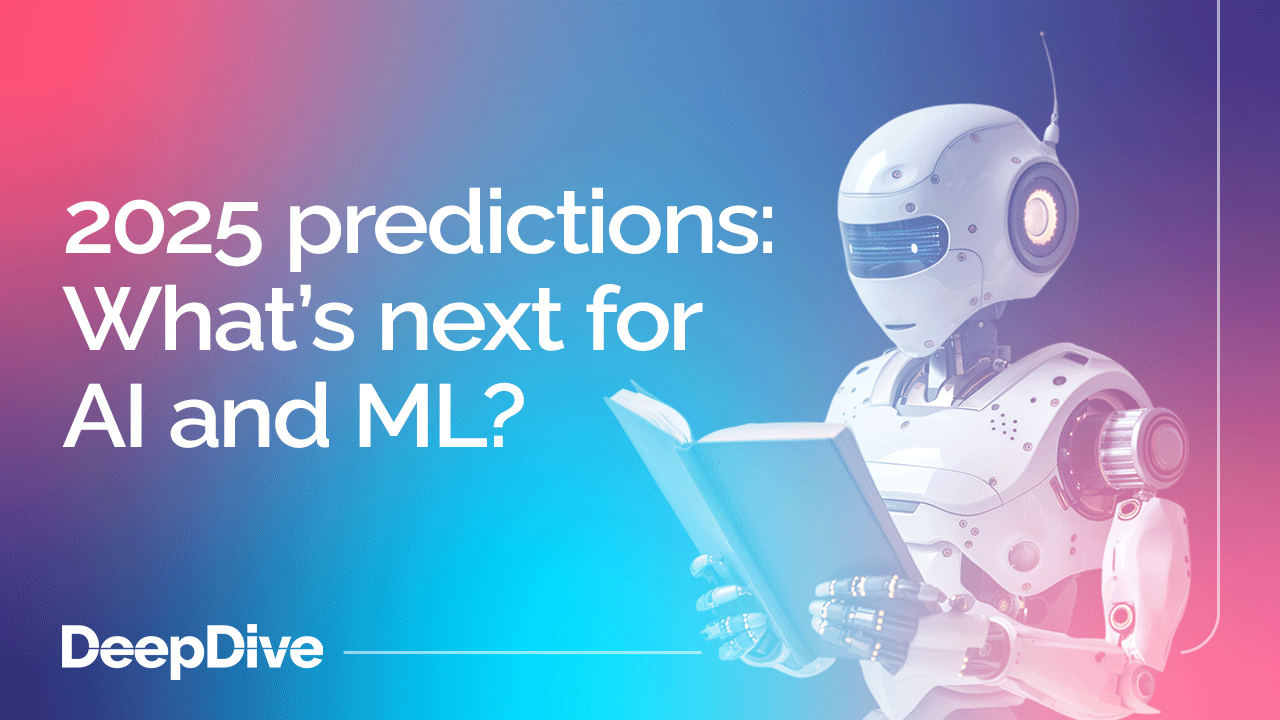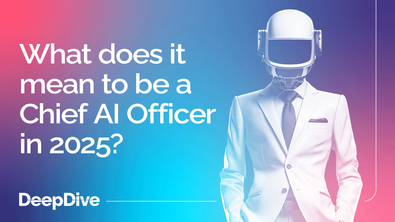

2025 predictions: What’s next for AI and ML?

Welcome to the 9 new deep divers who joined us since last Wednesday.
If you haven’t already, subscribe and join our community in receiving weekly AI insights, updates, and interviews with industry experts straight to your feed.
AI has seen incredible growth over the last decade, and the pace of advancements and adoption has spiked in the last couple of years. Now in Q2 2025, the field is poised for even greater advancements.
Many developers are focusing on fine-tuning their models, exploring impactful use cases across industries, and creating more sophisticated technologies to solve the most urgent problems humanity faces today.
Here’s a quick glance at some of the most exciting trends shaping the future of AI.
Smaller, more efficient models are on the rise
The AI race in 2025 just isn’t about making models bigger, with broader parameters, more training data, more computational power. Instead, it’s all about efficiency.
Researchers are increasingly focused on creating smaller AI models that deliver performance that competes with large-scale systems – but with drastically reduced energy and hardware requirements.
Tech firms including IBM are investing in techniques like knowledge distillation, which involves a smaller model learning from a larger one; and sparsity methods that enable models to operate using only the most relevant parameters.
It’s a shift towards creating more accessible AI, because users won’t need models that have access to massive data centres in order to function effectively.
Multimodal AI that understands more than just text
So far, the AI models that have successfully gone mainstream have been primarily reliant on one form of data. But multimodal AI models that process and understand multiple types of data (text, images, audio, and video) are set to become mainstream in the near future.
Early examples of publicly available multimodal AI models include OpenAI’s GPT-4 and Google’s Gemini, but predictions suggest the next wave will be significantly more sophisticated.
Later this year, we can expect AI models that will seamlessly integrate different types of data inputs to provide more nuanced responses. For example, an AI model might be able to analyse a video, summarise its key points in text, and answer follow-up questions in real-time.
This has a wide range of potential applications – from content moderation to education tools, and accessibility tools for digital services.
AI will play a growing role in scientific discovery
We recently wrote about the AI co-scientist that played an important role in solving a superbug. AI is already making major contributions to scientific research, and its use in experimental science is likely to become more prevalent; assisting in fields including drug discovery, climate modelling, and materials science.
AI-powered simulations will accelerate the development of new pharmaceuticals, rapidly and accurately predicting how molecules interact at a level of detail that can’t be achieved using conventional methods.
In climate modelling, we’ll see similar developments: AI will help researchers accurately model climate patterns so they can make better predictions for extreme weather events, as well as long-term environmental changes.
And it’ll grapple with complex reasoning
Current AI models are incredibly useful for pattern recognition, but they still struggle with complex reasoning and problem-solving. Now, advances in neurosymbolic AI (that combines neural networks with rule-based reasoning) are preparing to change that.
These more advanced models will integrate logic-based methods with deep learning. So AI will get better at understanding things like the context of data; it’ll be able to apply common sense; and reason through problems in a way that mimics how humans think.
This will trigger critical advances in the potential of AI to generate automated coding, for example; or to be leveraged in financial analysis or medical diagnostics.
AI ethics will become a top priority across industries
We already wrote about the AI ethics keeping us up at night, so we won’t go into detail again here. But throughout 2025 we absolutely expect concerns around safety, bias, and the ethical use of AI to intensify.
Policymakers, researchers, activists, and industry leaders are working on frameworks to make sure AI is developed and deployed responsibly.
We expect to see more transparency in AI decision-making and stricter regulations on the use of AI. And companies will be under increasing pressure to prioritise fairness in AI systems; making use of techniques like adversarial testing to detect and mitigate biases before an AI model is deployed.
An efficient and creative future for AI
Ultimately, future-minded AI developers are working to create efficient systems that can work usefully and creatively with human beings. They’ll meet our needs better and their limitations will be challenged more effectively. AI is definitely under scrutiny; but that scrutiny is essential to drive a positive future in which AI can be good for everyone.
What are your AI predictions for the rest of 2025? We’d love to know what you’re most excited about (or worried about).





